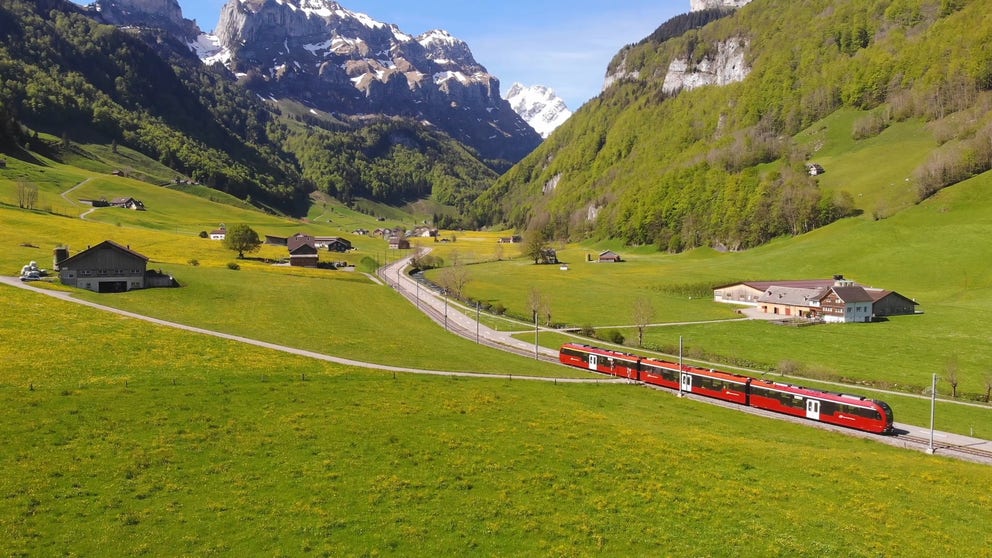Here are the top 10 mountain climbing destinations in the US
Travel experts at Family Destination Guide analyzed data from Instagram and TripAdvisor to determine a “Peak Score" for 600 mountainous destinations.
Best in travel 2023: Here are top 30 vacation destinations to visit
If you’re looking to travel, Lonely Planet’s "Best in Travel 2023
Adventurers seeking their next thrill can check out the best mountain climbing spots across the country.
Travel experts at Family Destination Guide evaluated 600 mountainous destinations based on Instagram hashtag data and TripAdvisor ratings and reviews.
Researchers used that information to assign every mountain a "Peak Score" to determine the top destinations for mountain climbing in the nation.
"The US is spoiled for choice with beautiful scenery, and mountain climbing is a popular year-round activity which allows you to immerse yourself in the country’s natural beauty," said a spokesperson for Family Destination Guide.
"With Spring just around the corner, it is a great opportunity for families, couples or solo travelers to explore the natural sights and landscapes that come with mountain climbing," the spokesperson added.
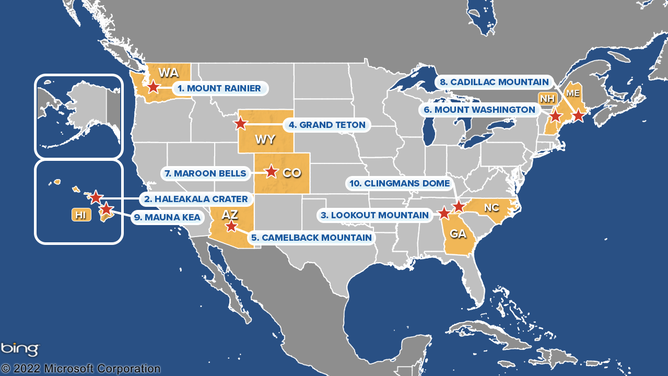
Map of top 10 mountainous destinations, according to Family Destination Guide. April 6, 2023.
(FOX Weather / FOX Weather)
1. Mount Rainier, Washington
Mount Rainier in Washington takes the top spot with a peak score of 22 out of 30. Visitors describe the mountain climbing experience as "a must-do."
The climate on the mountain is generally cooler and rainy, according to the National Park Service. Summer high temperatures fall in the 60s and 70s, with July and August being the sunniest months of the year. The NPS noted, however, that rain is possible any day and is very likely in spring, fall and winter months.
SKIES ERUPT IN COLOR DURING DRAMATIC SUNRISE NEAR WASHINGTON'S MT. RAINIER

Locals thought they saw steam coming off Mount Rainier Wednesday morning. USGS says that while it is an active volcano, Mount Rainier is not erupting.
(FOX 13 Seattle)
2. Haleakala Crater, Hawaii
From the Pacific Northwest, we find our No. 2 destination in the middle of the Pacific Ocean – Haleakala Crater.
Located on the island of Maui in Hawaii, Haleakala Crater has a peak score of 19 out of 30, with visitors noting "incredible views" and "something you must see in person," according to the study.
The crater is part of Haleakala National Park, where the weather in high-elevation areas is usually unpredictable and often changing. The NPS said the year-round summit temperatures range between below-freezing and high temperatures of 50-65 degrees.
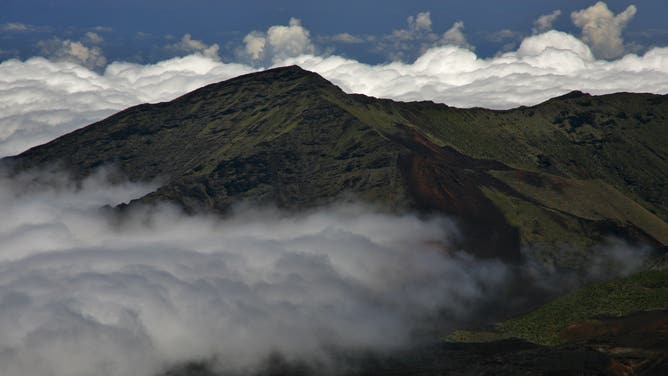
The rocky summit of Mt. Haleakala on Maui.
(Ted Soqui / Corbis / FOX Weather)
3. Lookout Mountain, Georgia and Tennessee
The third-ranked mountain climbing destination lies in the American South, with a peak score of 18.7.
Stretching between Georgia and Tennessee, Lookout Mountain has many scenic attractions. While the mountain straddles two states, its peak is located in Georgia.
Weather on Lookout Mountain includes average high temperatures in the high 70s in July, with the coldest temperatures dropping to the low to mid-40s in December and January.
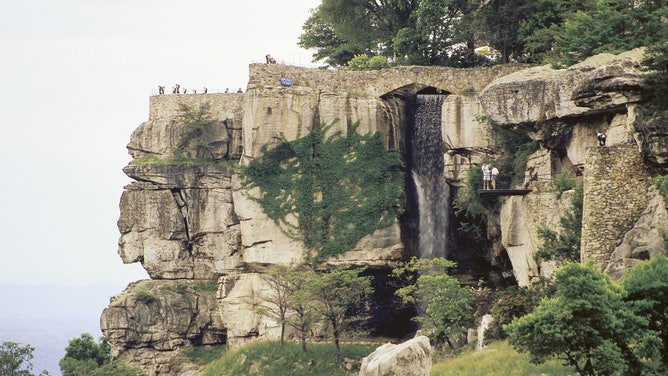
Visitors stand on Lookout Mountain on the Tennessee side.
(Independent Picture Service / Universal Images Group / Getty Images)
4. Grand Teton, Wyoming
Coming in fourth is Grand Teton, which is located near the northwestern corner of Wyoming. The mountain has a peak score of 18.4.
Located in Grand Teton National Park, the mountain experiences weather that changes drastically throughout the year. The lowest average temperatures are usually seen in December and January, falling into the mid-20s. The highest average temperatures usually fall in the high 70s and low 80s during July and August.
AMERICAN ARTIST JAMES NIEHUES TURNS SKI MAPS INTO MASTERPIECES
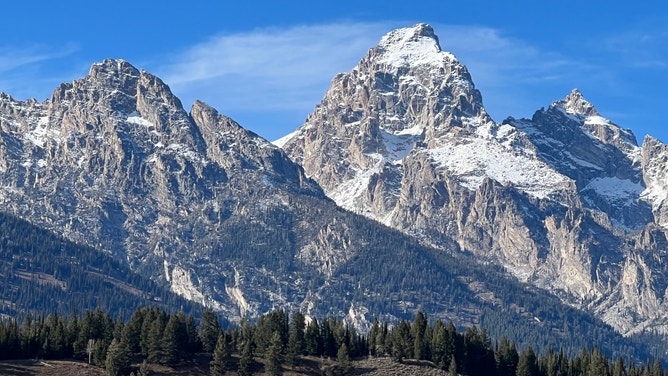
Images from Yellowstone and Grand Tetons National Parks.
(FOX Weather / FOX Weather)
5. Camelback Mountain, Arizona
Camelback Mountain lies next to Phoenix, Arizona, and has a peak score of 17. 2 out of 30.
The mountain has much to offer visitors, including those looking for a challenge. According to the City of Phoenix, the mountain has two main trails that make up the majority of hiking opportunities, and they are rated extremely difficult.
On average, spring temperatures in Phoenix range between the mid-60s and mid-70s in March and April and the low 80s in May. Temperatures peak in July and August, with average highs in the mid-90s.
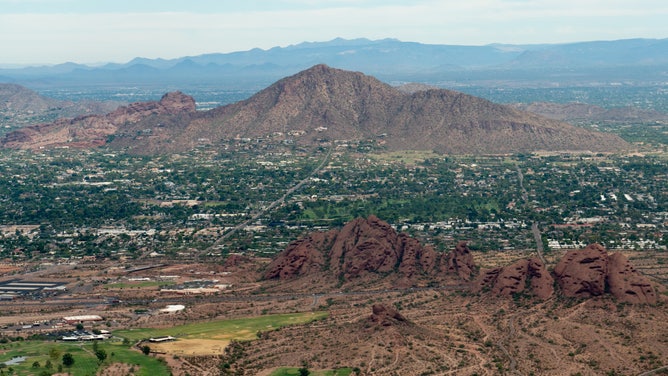
Camelback Mountain.
(Marli Miller / UCG / Universal Images Group / Getty Images)
6. Mount Washington, New Hampshire
Following close behind Camelback Mountain is Mount Washington. With a peak score of 17.1, the mountain summit rises to 6,288 feet.
The weather on Mount Washington, however, is considered by many to be the "worst in the world," according to the Mt. Washington National Park. The average temperature on the summit is 27.1 degrees, and average wind speeds rise to about 35 mph. For more than 100 days out of the year, however, the wind exceeds hurricane force (74 mph).
Despite the New Hampshire mountain’s exceptional weather, park officials said that on a clear day, views from the summit stretch as far as 130 miles to Vermont, New York, Massachusetts, Maine, Quebec and the Atlantic Ocean.
US SETS COLDEST WIND CHILL RECORD AT MT. WASHINGTON
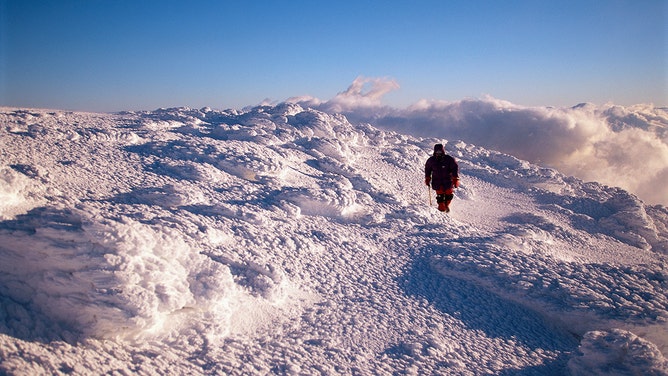
Hiker on Mount Washington
(Christopher J. Morris / CORBIS / Getty Images)
7. Maroon Bells, Colorado
The Maroon Bells are a series of mountains with bell-shaped peaks towering 14,000 feet, according to the Aspen Chamber Resort Association. Located near Aspen, Colorado, the mountains offer a variety of views, from rolling green meadows to rocky summits.
Average temperatures in the spring fall between the mid-40s and low 60s, and rise to the high 70s in the middle of summer.
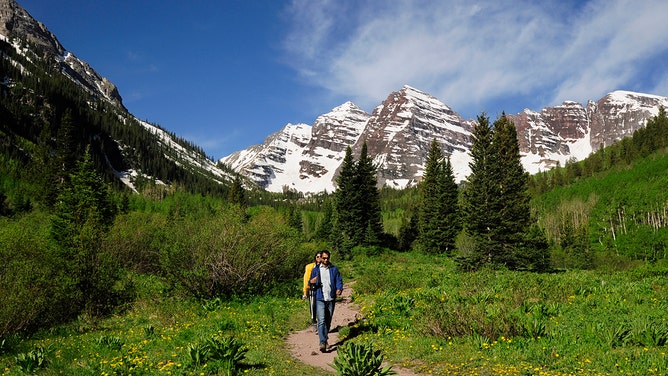
A couple visiting from India walk along a Colorado nature trail with the Maroon Bells as a dramatic backdrop. The Maroon Bells are two peaks in the Elk Mountains - Maroon Peak and North Maroon Peak. They are located in the Maroon Bells-Snowmass Wilderness of White River National Forest.
(Robert Alexander / Getty Images)
8. Cadillac Mountain, Maine
Cadillac Mountain lies in Acadia National Park in Maine. It has a peak score of 16.2 out of 30, and, according to the NPS, the mountain is the highest point on the Eastern Seaboard of the country.
Weather around Cadillac Mountain in the spring is usually foggy, with average temperatures falling between 30 degrees and 70 degrees, according to the NPS.
Summer brings a wide range of temperatures, often falling between 45 degrees and 90 degrees, and conditions that can quickly change from warm and sunny to cold and rainy.

The sun sets on Cadillac Mountain.
(Karla Ann Cote / NurPhoto / Getty Images)
9. Mauna Kea Summit, Hawaii
Mauna Kea is a dormant volcano located on the Big Island of Hawaii. According to the U.S. Geological Survey, Mauna Kea rises 13,803 feet above sea level.
Weather around Mauna Kea includes average high temperatures that fall in the mid-70s during the spring and then rise to the low 80s in the summer months. Rainfall is usually the lowest between April and September.
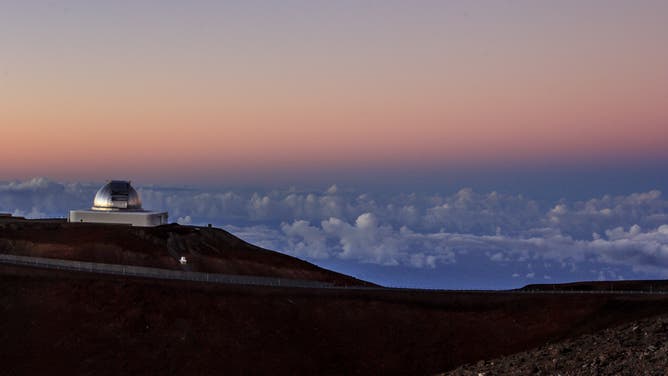
The NASA Infrared Telescope Facility (IRTF) at sunset at the Mauna Kea Observatories Summit on the Big Island of Hawaii. The observatory is place on the island highest point to see the clearest view of the stars.
(Julie Thurston Photography / Getty Images)
10. Clingmans Dome, Tennessee and North Carolina
Rounding out the top 10 list of mountainous destinations is Clingmans Dome in the Great Smoky Mountains National Park.
Located on the border between Tennessee and North Carolina, Clingmans Dome is the highest point in the park, the highest point in Tennessee and the third-highest point east of the Mississippi River, the NPS said.
Weather at Clingmans Dome usually involves clouds and precipitation, according to the NPS. On clear days, however, views can stretch over 100 miles around the dome.
Cold temperatures are also the usual, dropping by about 10-20 degrees at the dome itself.

A patch of dandelions near the Clingmans Dome overlook tower, a major scenic viewing point along the Appalachian Trail, is viewed on May 11, 2018 near Cherokee, North Carolina.
(George Rose / Getty Images)
